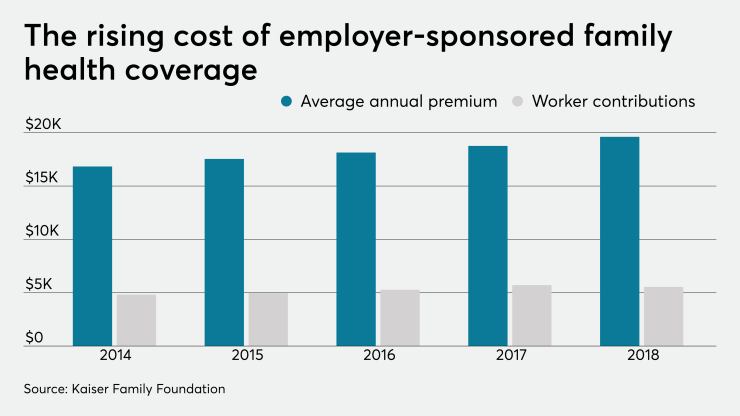At a recent Pacific Business Group on Health forum, one large employer said after seeing tens of millions of dollars a year spent on healthcare, she could not point to any improvements in employee health. Sadly, this is reflective of the purchaser experience across the country. It is easy to get discouraged about the state of healthcare in this country as costs continue to go up, and widespread quality and health improvement seem elusive.
I’m frequently in Washington, D.C., and while there have been glimmers of hope for meaningful policy intervention, as industry interests pushback on change, it looks increasingly unlikely that we will get to any meaningful solutions.
There isn't much to feel good about — and that's why the early results from the Transforming Clinical Practice Initiative going on in my home state of California were such a welcome positive change. With funding from CMS, my organization, PBGH, teamed up with LA Care Health Plan, and the Southwest Pediatric Practice Transformation Network (a partnership of CHOC Children's Hospital and Rady Children's Hospital) as part of the most extensive quality improvement effort ever underway in the golden state, and possibly the country. We worked with close to 10,000 providers, touching the lives of 5.9 million Californians, all while saving $6 for every $1 invested. Together we helped California patients avoid 67,000 emergency department visits, 57,000 hospital admissions and we improved care or outcomes for three-quarters of a million people.
This massive undertaking has enormous implications for employers and their partners who wish to share our success. Here is my advice on how to get started.
Employers need to understand primary care is the right investment
As employers, it seems like we spend almost all our time focused on the significant cost drivers — chronic disease, prescription drugs and specialty care. And yet unlike the U.S, every other country with a healthcare system that is high quality and cost-effective has a system built around robust primary care. This initiative showed once again that investment in primary care today yields enormous cost savings tomorrow. Most importantly, it improves health outcomes for our employees, members and their families. As employers, we can not only push our health plan partners to invest in primary care; we can come together to support quality improvement initiatives.
You can, and should, partner with providers
Speaking for large employers, sometimes it seems like we are often at odds with provider organizations, as we work to figure out issues like networks or performance metrics. When we lament rising costs and poor quality, it can sometimes feel like it is us vs. them. One of the most amazing elements of our work in California was that it brought providers and employers together onto the same team. We had an open dialogue about quality and the meaningful quality measures, and we touched almost 10,000 of the primary care providers working in the state.
Payment reform and multi-payer alignment are critical.
Pulling off a feat like this in California, is admittedly, somewhat easier than it may be in other states. We are a state with a high penetration of managed care and capitation. The majority of providers already get the same message from payers — "we pay for value, not volume." And of course, we were fortunate to have CMS grant funding to support this work. However, this success can be replicated anywhere. Employer coalitions can play a fundamental role in getting payers on the same page. It is critical that our alliances include public payers such as state Medicaid agencies and public employees’ retirement system organizations as well. Together, we can send signals to the market and let them know we are focused on supporting primary care.
How you pull all the stakeholders together is the secret sauce
When it came to doing this work, my organization had one massive advantage from the get-go: our multi-payer quality improvement program California Quality Collaborative (CQC). CQC is a healthcare improvement organization dedicated to advancing the quality and efficiency of the healthcare delivery system in California with a long history of supporting quality improvement, leading collaboratives, and workshops for providers and plans alike. The CQC steering committee is comprised of leaders from physician groups, health plans, purchasers, public health entities and their partners.
What this means in practice is that any quality improvement initiative CQC undertakes has multi-stakeholder and multi-payer collaboration from the get-go. The organization represents the vast majority of the payers in California. A medical practice won't — and shouldn't — improve the way they practice medicine to meet the wishes of a handful of their payers. By creating organizations like CQC that have collaboration and multi-payer heft, you can set the stage for wide-scale quality improvement efforts.
This needed success story is doable
As my colleague Dr. Michael Weiss, vice president of population health and CHOC Children’s so stated, “This effort shows that proactively investing in high-quality care and care coordination brings value to patients, providers, payers and the overall system. Helping primary care practices transform is both achievable and important. We need to continue to collaborate and scale investment in multi-payer support for advanced primary care.” Our experience in California is replicable elsewhere. Meanwhile, here in California, we have an enormous opportunity to build on this success if we continue to work together.






